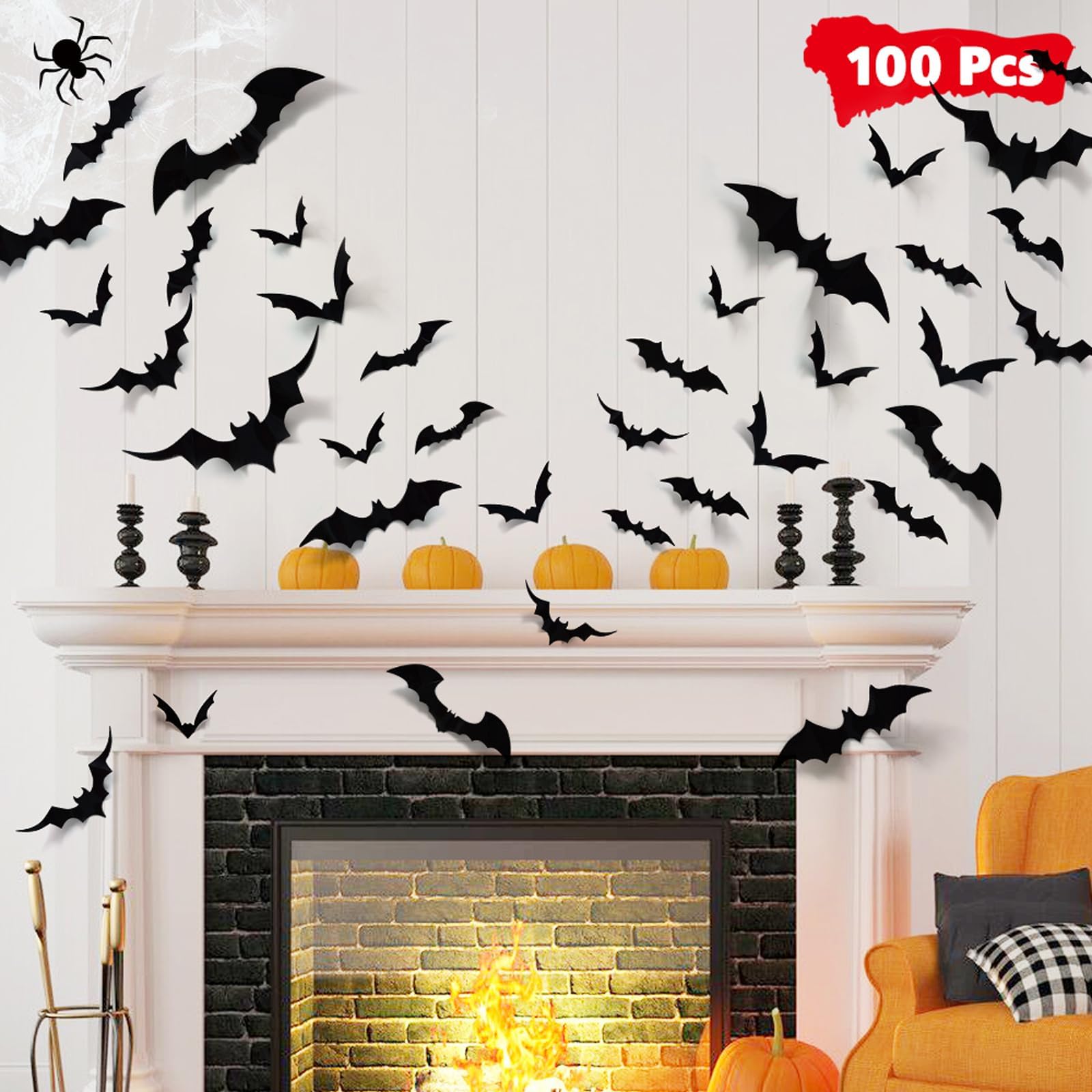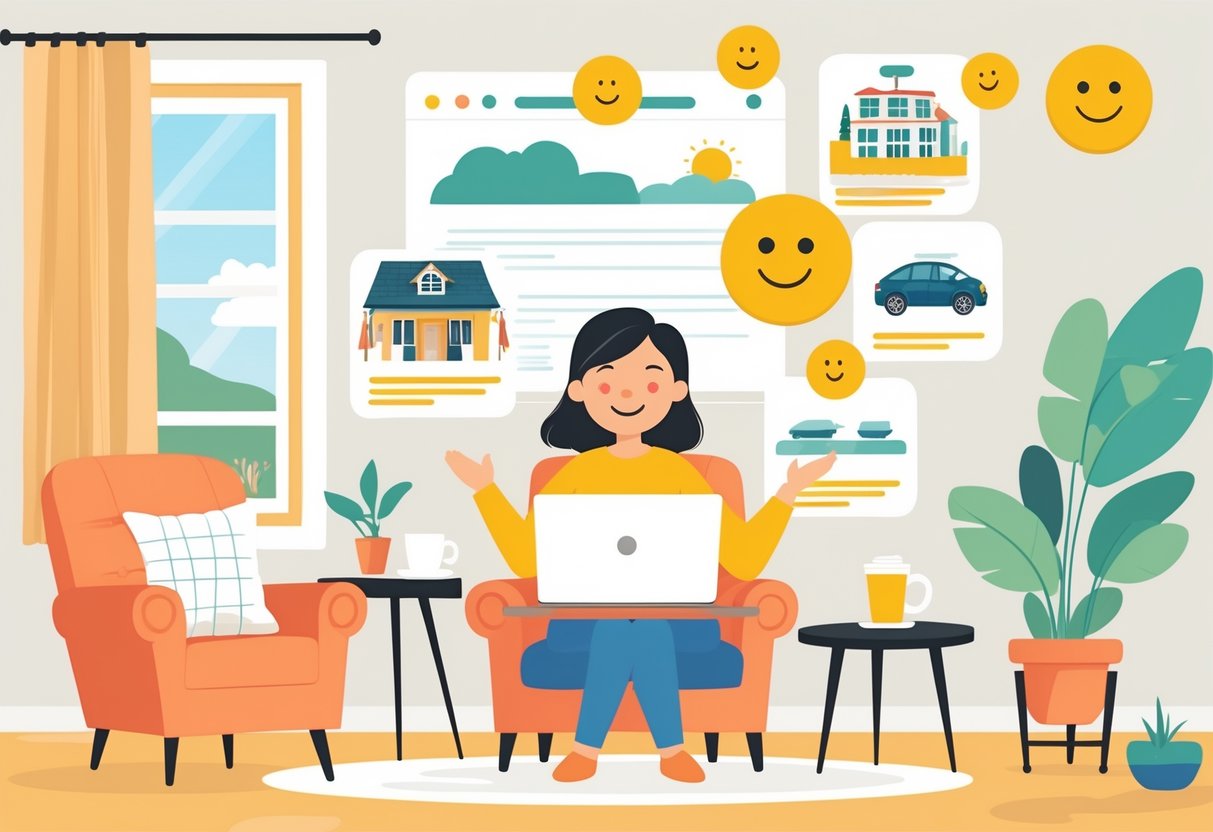People often think minimalism means shelling out for fancy organizers or trendy storage bins. That belief keeps a lot of folks from even trying to simplify—and honestly, it's just not true.
Minimalism on a Budget: Declutter and Save Without Spending a Cent
People often think minimalism means shelling out for fancy
organizers or trendy storage bins. That belief keeps a lot of folks from
even trying to simplify—and honestly, it's just not true.
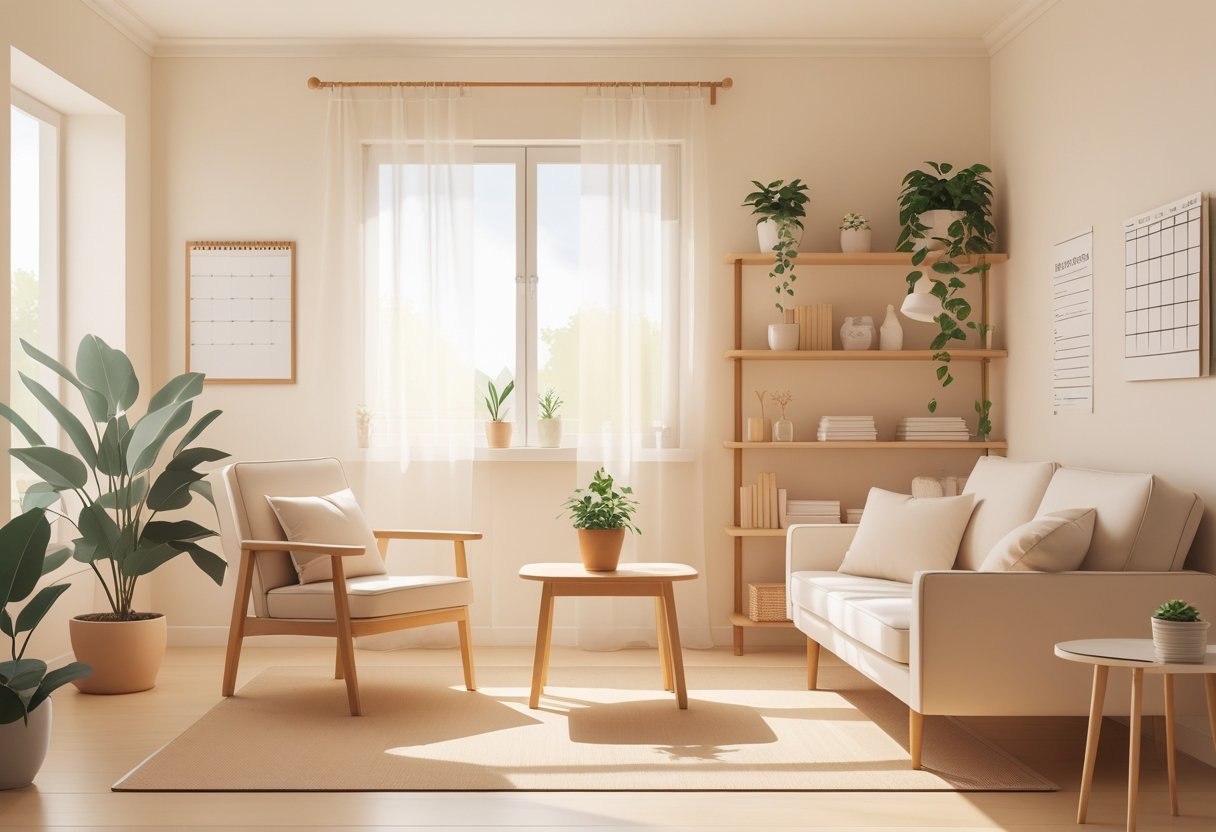
The best minimalist transformations start with strategic decluttering, repurposing what you already own, and building intentional habits that quietly save money.
Anyone can create a clutter-free, organized home using what's on hand. It just takes some simple techniques—no need for a shopping spree or a total overhaul.
Budget-friendly minimalism is all about cutting out the excess instead of chasing after more stuff.
That mindset saves money right away, and over time, it really adds up—less to maintain, fewer impulse buys, and a sharper sense of what actually matters day-to-day.
Key Takeaways
- Minimalism is free when you focus on decluttering and using what you already have
- Organizing with household items beats spending on storage solutions
- Intentional consumption habits lead to long-term savings and a simpler lifestyle
The Essentials of Minimalism on a Budget
Budget-friendly minimalism blends intentional living with financial sense, letting people declutter without dropping cash.
It's more about shifting your mindset, selling off what you don't use, and being deliberate with your stuff.
What Is Budget-Friendly Minimalism?
Budget-friendly minimalism favors mindset changes and intentional choices that cut clutter and spending over buying new organizers or doing expensive home makeovers.
You don't need to buy your way into a minimalist lifestyle. In fact, that kind of defeats the point.
This practice boils down to a few big ideas:
- Elimination over acquisition – get rid of stuff instead of adding more
- Intentional consumption – buy on purpose, not on impulse
- Resource optimization – squeeze value from what's already in your space
Start by clearing out what you don't need and selling it if you can. That puts a little cash in your pocket and clears the decks at the same time.
Minimalism is really about quality, not quantity. You learn to spot the difference between wants and needs, and you keep what's useful or genuinely makes you happy.
Financial Benefits of a Minimalist Lifestyle
Minimalism can seriously boost your finances by cutting spending and freeing up savings. The core idea is to ruthlessly prioritize spending on what matters and cut out the rest.
Immediate Financial Gains:
- Sell your old stuff for quick cash
- Say goodbye to impulse buys and watch your savings grow
- Spend less on maintaining things you barely use
- Need less storage space—and maybe even a smaller home
Long-term Economic Benefits:
- Build that emergency fund faster
- Pay down debt with laser focus
- Enjoy more financial flexibility for experiences or goals
- Stress less about money, period
When you spend with intention, every dollar lines up with your goals. It's kind of wild how much less you actually need to live well.
Letting go of the urge to keep up with trends means you can put your money toward things that matter—like memorable experiences or just feeling secure.
Shifting Your Mindset for Decluttering Success
Mental prep is the secret sauce for budget-friendly minimalism. You've got to shake off that "more is better" thinking and get comfortable making deliberate choices about what stays in your life.
Key Mindset Changes:

People who stick with this lifestyle get good at resisting impulse buys. They pause and ask if something really serves a purpose or just scratches a fleeting itch.
This shift is about realizing that happiness comes from experiences and relationships, not a pile of stuff. Empty spaces and clear surfaces start to feel pretty satisfying.
Practical Mental Strategies:
- Think of decluttering as gaining space, not losing things
- Notice the freedom that comes from owning less
- Pat yourself on the back for every dollar you don't spend
- Enjoy the calm that comes from organized spaces
It takes a while for this mindset to really stick, but once it does, it's a game-changer. Suddenly, less stuff means more time, more money, and way more mental clarity to chase what you actually care about.
Decluttering Strategies That Cost Nothing
The best decluttering strategies don't involve buying new containers or gadgets. It's all about changing your habits and how you make decisions about your stuff.
You'll want to look honestly at what you own, set priorities, and tackle spaces one at a time.
Assessing Your Consumption Habits
Understanding what you buy (and why) is the first step toward real decluttering. Most of us pile up clutter without even noticing, just from everyday shopping habits.
Try tracking everything you buy for a week—don't change a thing, just write it all down. Note why you bought each item, too. You might spot a few surprises, like buying duplicates or things you rarely touch.
Take a peek into your storage spaces and see what's gathering dust. You'll probably find:
- Single-use kitchen gadgets
- Clothes with tags still on
- Unread books
- Electronics or cables you can't even identify
Look back at impulse buys from the past few months. How many are just sitting there?
Set a simple rule: wait 24 hours before buying anything non-essential. That pause works wonders for avoiding future clutter.
Keep a list of what actually added value versus what became clutter. You'll naturally buy less and keep your space clearer moving forward.
Prioritizing What to Keep and Let Go
Decluttering really comes down to honest evaluation—not just keeping stuff because you "might need it someday."
Try the one-year rule: if you haven't used it in a year, it's probably safe to let it go. "Just in case" items rarely come in handy.

Think about replacement cost and how often you actually use something. If it's pricey and you use it at least once a year, maybe keep it. Cheap things that never see daylight? Out they go.
Don't forget about the "space cost." Every item takes up room you could use for something more valuable—or just enjoy the empty space.
Minimalism asks you to keep only what adds value to your life right now. It's easy to hang onto stuff for sentimental reasons or old hobbies, but be honest about whether it still fits your life.
If you're unsure, box it up for 30 days. If you don't miss it, you probably don't need it.
One Room at a Time Method
Tackling one room at a time keeps things manageable and helps you actually finish the job. It's way less overwhelming than trying to do it all at once.
Start in spaces with less emotional baggage, like the bathroom or laundry room. These spots usually have fewer sentimental items, so it's easier to make decisions and build momentum.
Finish each room before starting the next. Half-done rooms just create more chaos and sap your motivation.
Here's a quick process for each room:
- Empty the storage areas
- Give everything a good cleaning
- Sort items into keep, donate, or toss piles
- Put only the keepers back, and organize as you go
Focus on one category at a time. For example, do all the clothes in a bedroom first, then books, then decor. It keeps decisions simpler.
Plan for 2–4 hours per room, depending on how much stuff you have. Rushed decisions usually lead to regret, so take your time.
Snap before-and-after photos. Seeing the difference can be super motivating, especially when you hit tough spots like the home office or that dreaded closet.
Creative Organization and DIY Storage Solutions
You don't need to spend a dime to turn cluttered rooms into organized spaces. Just get creative and use what you already have—old boxes, jars, baskets, whatever's lying around.
Repurposing everyday stuff and thinking outside the box can give you all the storage you need for a minimalist vibe, no shopping required.
Repurposing Items You Already Own
Empty containers work as instant organization tools with barely any fuss. Glass jars stash kitchen staples, office supplies, and bathroom bits while keeping things visible.
Shoe boxes turn into drawer dividers if you wrap them in leftover paper or fabric scraps. Old furniture finds new jobs around the house—dressers morph into entertainment centers with secret storage.
Wooden crates stack up as modular shelves for books, linens, or whatever seasonal stuff keeps floating around. Mason jar organizers mounted on boards bring a rustic vibe and keep things tidy at the same time.
Tin cans wrapped in old fabric or paper make surprisingly handy desk organizers. Plastic containers with lids? They're perfect for airtight storage in the pantry or for corralling craft supplies.
Suitcases slide under beds and hide out-of-season clothes. Big shopping bags step in as sorting bins during those chaotic decluttering sprints.
If you're careful, you can cut wine bottles to create quirky planters or little desk accessories—just don't rush that part.
DIY Projects for Functional Organization
Pegboard wall organizers squeeze every inch out of vertical space. Got some bent wire hangers? Twist them into hooks for tools, keys, or whatever else needs a home.
Leftover paint from past projects can give old storage containers a new lease on life. Cardboard works well for custom drawer dividers—just cut it to fit and you're good.
Fabric scraps jazz up storage bins if you glue or sew them around boxes. String or rope gets a second act as hanging organizers for lightweight odds and ends.
Under-bed storage drawers built from old planks and wheels reclaim forgotten space. Tension rods under sinks hang cleaning supplies out of sight.
Cork boards made from wine corks keep notes and reminders in check. Magazine files crafted from cereal boxes corral papers on your desk.
Hanging shoe organizers—honestly, they're underrated. Use them for craft stuff, cleaning products, or pantry overflow right on the back of a door.
Maximizing Storage With Everyday Materials
Vertical Solutions stretch tiny spaces. Stack books for a makeshift side table with a hidden cavity underneath.
Roll towels tight to squeeze more into the linen closet. Link hangers together to fit more clothes on a single rod—kind of a game-changer, honestly.
Hidden Storage Areas pop up if you look for them:
- Behind picture frames
- Inside ottoman tops
- Under stair treads
- Above doorways
- Below kitchen sinks
Magnetic solutions stick to fridges or filing cabinets. Magnetic spice containers free up shelf space, and little metal tins hold office odds and ends.
Rubber bands bunch up similar items in drawers. Paper clips link together for custom hooks on the fly.
Aluminum foil works as a quick-and-dirty drawer organizer for tiny things. Newspaper wraps up seasonal decorations when it's time to pack them away.
Clear containers and labels keep you from buying the same thing twice. Masking tape and markers do the trick for temporary labels when you're in the middle of reorganizing.
Designing a Minimalist Home Without Spending
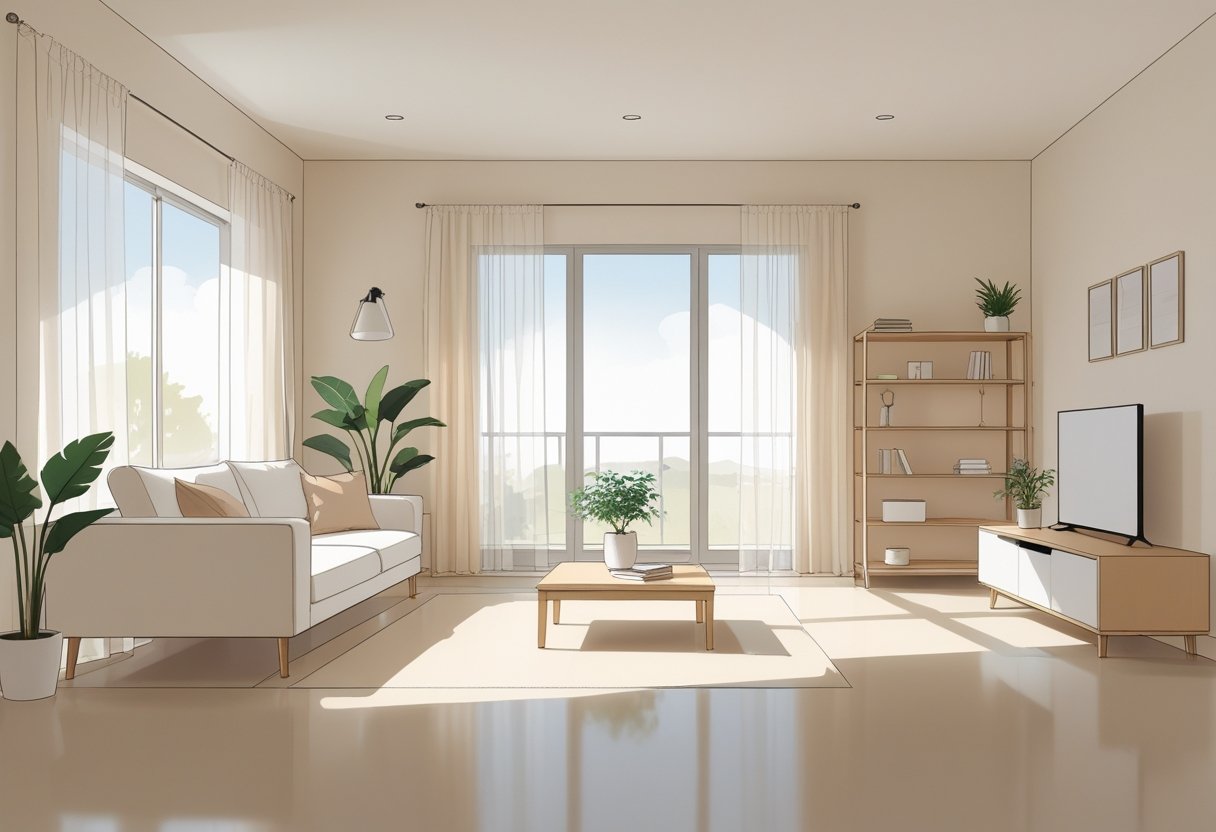
Pulling off a minimalist vibe doesn't have to cost a cent if you use what you've got and make a few smart moves. Paint can totally shift a space, nature's basically free decor, and you can arrange what's on your walls to replace pricey art.
Selecting a Neutral Color Palette
Neutrals set the stage for minimalist design, and you probably already own plenty. White, cream, beige, and soft gray calm things down visually and make rooms feel bigger and brighter.
If you dig around, you'll likely find white bedding, beige curtains, and gray furniture that fit right in. Paint is still one of the cheapest ways to change a room—one can of white or light gray can totally transform a space for less than $30.
Stick to two or three shades that vibe together, and you'll dodge visual clutter. That restraint makes your existing stuff look way more intentional.
Cooler tones like soft grays and whites feel modern. If you're after warmth, cream and beige do the job while still keeping things simple.
Incorporating Natural Elements for a Fresh Look
Nature's got your back—branches, stones, shells, and dried flowers add texture for free. Large branches in vases become instant focal points, and pine cones or driftwood make funky shelf decor.
Houseplants not only clean the air but also soften up all those straight minimalist lines. Grow new plants from cuttings or swap with friends to build your collection without spending anything.
Natural light is the MVP in minimalist homes. Ditch heavy drapes or move furniture so sunlight can flood in.
Wooden items you already own can stand out more—cutting boards as wall art, wooden bowls as accents, and exposed grain for warmth against those neutral walls.
Decorate With Minimalist Wall Art
Fewer pieces on the wall actually make a bigger statement than a bunch of tiny decorations. Three carefully chosen things beat twenty random ones any day.
Blow up your favorite photos and pop them in big frames for a gallery feel. Or group small photos together in one frame for a cohesive look—no need to buy new art.
Kids' art, fabric scraps, or even pages from old books can look stylish with a simple mat and frame. Black and white prints from your own printer cost next to nothing and look sharp.
Empty space isn't wasted—it lets your favorite pieces breathe. Sometimes a blank wall is the best design choice you'll make all week.
Move art around between rooms if you're craving a change. You'll be surprised how different things feel with just a new arrangement.
Minimalist Furniture: Refresh, Don't Replace
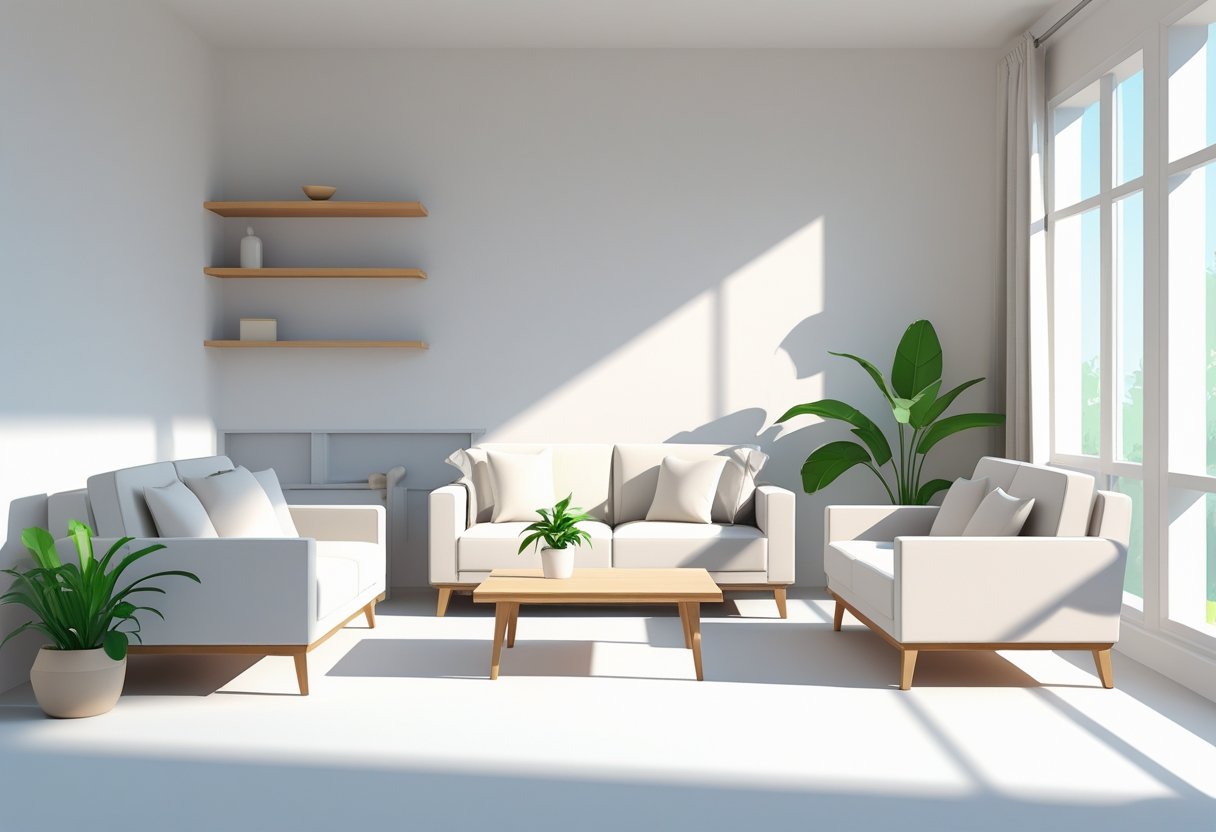
Give your existing furniture a second chance with paint and a new layout. You don't need to buy anything new—just rethink what you've got and how you use it.
Revitalizing Old Furniture With Paint
Paint does wonders for tired furniture. White, cream, and soft gray bring out that crisp, minimalist vibe.
Wooden dressers, nightstands, and dining tables all take well to paint if you sand them lightly and use primer. DIY furniture painting doesn't demand fancy tools—sandpaper, primer, paint, and a couple brushes do the trick.
Here are some color combos that just work:

Chalk paint skips some of the prep—just slap it on and it usually sticks. Go for thin coats; two or three light layers beat one heavy one every time.
Arranging Layouts for Maximum Space
How you arrange furniture changes everything. Push bigger pieces against the wall to open up the middle of the room.
If you've got space, pull sofas or tables away from the wall to create cozy conversation zones. Multi-functional pieces pull double duty—ottomans hide clutter and still offer seating.
Keep at least two feet between furniture for easy movement. Vertical arrangements, like stacking books or adding tall decor, draw the eye up and make spaces feel taller.
Cut down on extras—one solid coffee table usually trumps a bunch of side tables. Odd numbers of pieces tend to look better than even ones, for whatever reason.
Mixing and Matching Existing Pieces
Move furniture between rooms for a fresh setup. A bedroom chair might suddenly look perfect in the living room.
Stick to a consistent color palette to tie mismatched pieces together. Painting everything in similar neutrals helps a lot.
Get creative with function—dining chairs can work at a desk, and stools from the kitchen can fill in as extra living room seating when friends drop by.
Mix up textures, but keep colors coordinated. Smooth paint and natural wood grains play nicely together if the hues match up.
Scale matters more than matching sets. Make sure pieces fit the room and each other—no need to obsess over everything matching perfectly.
Strip away extra decorations for cleaner lines. Minimalism is all about simplicity, no matter what era your furniture comes from.
Don't be afraid to try weird combos if they solve a problem. Sometimes the best solutions are the ones you didn't plan.
Smart Sourcing: Free and Low-Cost Options
Building a minimalist lifestyle means getting picky about what you bring home and sticking to your budget. Community resources and online groups make it way easier to find what you need without paying full price.
Utilizing Thrift Stores and Community Shares
Thrift stores serve up pre-owned finds—usually 60-80% cheaper than new. You'll find furniture, clothes, books, and kitchen stuff that fit a minimalist look.
Some thrift store tips:
- Go in the mornings on weekdays for the best picks
- Check out shops in higher-end neighborhoods
- Look for real wood and natural fibers
- Inspect things for wear and tear—don't skip this step
Community sharing programs stretch your options even further. Buy-nothing groups, neighborhood exchanges, and community centers let you swap or grab items for free.
Religious organizations sometimes have clothing closets or furniture banks. Universities often hold end-of-semester cleanouts where students ditch perfectly good stuff.
Community resources worth checking:
- Neighborhood groups: Facebook buy-nothing communities
- Religious centers: Clothing closets and food pantries
- Educational institutions: Student move-out sales
- Community centers: Tool libraries and swap meets
Online Resources for Gently Used Finds
Digital platforms make it pretty easy for minimalists to find quality pre-owned stuff. Facebook Marketplace, Craigslist, and OfferUp let you pick up items locally, which means you can skip those annoying shipping fees.
Amazon's warehouse deals section? It's a goldmine for returned items at a discount. You still get the same functionality, but usually save anywhere from 20-40% compared to buying new.
Platform comparison:

Estate sale websites show upcoming sales by zip code, which is handy. Most of these happen on weekends and you'll find household items from folks who are downsizing.
Online auction sites can get a little intense. If you set a max bid ahead of time, you'll avoid that trap of bidding wars and overspending.
If you can, try to buy during off-peak seasons. For example, furniture prices tend to drop in winter when fewer people are moving.
Sustaining Your Minimalist Journey for Free
Sticking with minimalism takes some daily effort and, honestly, firm boundaries about what you bring home. These habits help keep clutter at bay and let you keep enjoying the financial perks of minimalist living on a budget and avoiding sneaky hidden costs.
Maintaining a Clutter-Free Routine
Daily maintenance is honestly the secret sauce—no one wants to face a massive decluttering marathon. A 10-minute evening reset can work wonders for keeping things in order, and you won't need to buy fancy storage bins.
Simple stuff like making the bed, clearing counters, or just putting things back where they belong makes a difference. It sounds basic, but these small actions really add up.
Weekly maintenance tasks:
- Declutter one drawer or a small spot
- Check if you need to return any recent purchases
- Donate things you're not using anymore
Once a month, take a look around and see which areas keep getting messy. Tweak your daily habits if you notice the same spots always fill up with stuff.
Consistency matters way more than perfection. Skip a day? No big deal. But if you let it slide for weeks, that clutter's going to creep right back in.
Adopting the One In, One Out Rule
This simple boundary keeps stuff from piling up, but it doesn't mean you can't buy what you need. When you bring home something new, you let go of something similar from your space.
Practical applications:
- Get a new shirt? Donate an old shirt.
- Finished a book and bought a fresh one? Pass the old one along.
- Brought in a kitchen gadget? Out goes a duplicate tool.
The rule works better when you use categories, not strict one-to-one swaps. So, if you snag a new jacket, you can let go of any piece of clothing, not just another jacket.
Exceptions include:
- Consumables like food and toiletries
- Replacing broken essentials
- Items that combine several uses
This approach helps you hang onto that clutter-free environment you worked for. After a while, the rule just feels natural—no need to spend extra on fancy organization systems.
Most of us pay attention to our big-ticket expenses, but those sneaky, recurring charges? They slip by almost unnoticed every month. Hidden costs can quietly drain hundreds or even thousands of dollars a year from your budget—70% of consumers underestimate their monthly recurring charges.
Most people spend more than $280 every month on unplanned purchases. What looks like a harmless shopping run can quietly drain your finances faster than you'd expect.
4 Cheap But Great Looking Halloween Decorations That Will Transform Your Home This October
Halloween decorations can turn any boring space into a spooky, festive setup that actually feels like October. You don't have to spend a ton or build something wild to get the effect you want.
4 Tricks to Get the Best Airfare Prices on Google Flights: Expert Strategies for Maximum Savings
Google Flights has some pretty powerful search tools, but honestly, most travelers don't dig deep enough to make the most of them. There's a lot going on behind the scenes—flexible searching, price tracking, and clever route options that can really save you money if you know where to look.
Finding that sweet spot between comfort and affordability when booking holiday accommodation? It takes more than just clicking the lowest price you see. A lot of people think sticking to a budget means giving up on comfort, but honestly, that's not always true. Better planning can save you from a disappointing stay and, frankly, a lot of regret.



